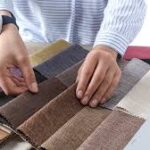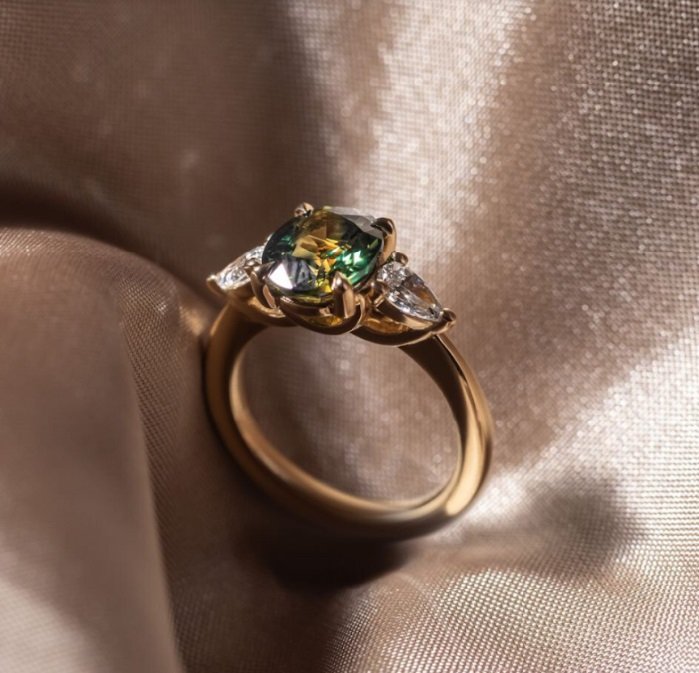As a sophisticated and stylized spin on the classic, traditional mined gemstone rings that most bridal shops offer, lab grown blue sapphire engagement rings are discovered to be preferred by those who appreciate quality combined with beauty. Hand-made sapphires have the same intrinsic beauty, strength and meaning as natural gemstones but are made with sustainability in mind.
In this post, we shall look at everything you need to know about lab grown blue sapphire rings. We have encapsulated the main advantages, how they fall in with natural sapphires and why so many are turning to them.
What Exactly are Lab Created Blue Sapphires?
Synthetic sapphires (including blue) are created in a lab where conditions simulate the natural occurrence allowing to grow actual stones, vs just flat layers. These Burmese style sapphires are chemically, physically and optically identical to natural sapphire; with timeless blue hues they have entranced people for millennia. The only difference is that sapphires grown in the lab are produced without the environmental implications and ethical dilemmas of mining.
Scientists can grow premium blue sapphires that would have taken hundreds of years in nature: White stars like the Verneuil and Czochralski processes. This makes one, in some cases even two stones that are equal or higher than natural sapphires for clarity, color and brilliance.
The Benefits of Lab Grown Blue Sapphire Rings
Lab grown blue sapphire rings have some very unique benefits, they can be good for both ethical and aesthetic purposes.
1. Resilience
Perhaps the most convincing argument in favor of lab grown blue sapphire rings is their environmental impact. Sapphire mining at a large-scale often results in significant deforestation, soil eroding and water pollution that threatens local ecosystems. By contrast, lab-created sapphires created in a laboratory have an impressively tiny carbon footprint.
2. Moral Procurement
In the era of Digitalization, we have heard lots of stories related to the mining sector which includes terrible working conditions and wages. That means you can feel good knowing your blue sapphire was produced ethically, without the need to harm workers or pillage local communities using mining. You can see how this might work well for people who want to make sure they are able to know exactly where their duck comes from.
3. Affordability
You can buy a laboratory developed blue sapphire ring right this moment for less than four hundred dollars, easy to see the primary value factor from there. The price difference changes anything from 30% up to 50%,according to the size and quality of the gemstone. This makes it possible for more consumers to afford larger, and better quality sapphires. If you desire a sapphire ring but can’t afford a luxury price tag, there’s always the lab grown option!
4. Quality and Appearance
When it comes to quality, the appearance of lab grown blue sapphire is similar in every other way as people get with natural stone. In fact, due to the controlled growing environment, lab-grown sapphires are typically less included and flawed than their naturally mined counterparts. It also leads to greater transparency and much clearer vividness in the gemstone, giving you a brilliant clarity and color.
How to Care for Your Lab Created Blue Sapphire Ring
Blue sapphires grown in labs are some of the most durable out there, they rank a 9 on Mohs hardness scale. Watches which are not easy to scratch, as well as damages. But, for the top shape of your ring, there are a few basic care tips you should follow.
- Clean Your Ring: Gently scrub your sapphire ring frequently with a soft brush and mild soapy water. Harsh chemicals or ultrasonic cleaners may damage the gemstone and setting.
- Store Properly: To avoid scratches, your ring should always be stored in its jewelry box or a soft cloth pouch when not being worn.
- Check Often: Get your ring examined with a jeweler at least once per year regarding safety and health from the gemstone.
Conclusion
While large blue sapphires can cost 1000s or more, lab grown blue sapphire rings are both stunning and Ethical in terms of pricing. Argentium silver wedding rings are brown and very strong, making them a beautiful choice for those who want to express themselves with their jewelry while still being aware of the environment. Sneak Peek People are choosing lab grown blue sapphire for its sustainability, and many people simply love the look of fine quality stones like this one.










